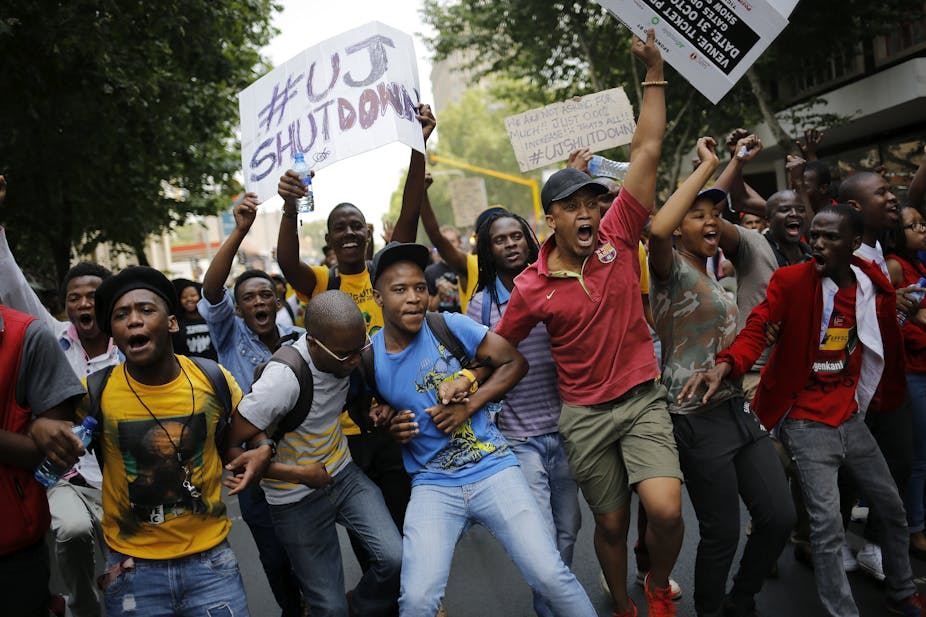Protest movements are manifestos of a sort. Like manifestos, both political and aesthetic, they usually aim to create the support they need by seeking to identify a wrong, then proposing a way of righting it.
The best and most durable manifestos seek to provide an explanatory framework that brings the wrong in question into sharp focus. The manifesto draws on the resources of history and theory to promise an increased capacity for human agency and control over - or at least positive intervention in - the existing state of things.
The Communist Manifesto of Marx and Engels was written in 1848. It came with the promise that understanding the world through its analyses would help to bring change. Despite its strong analysis, the manifesto had absolutely no immediate impact. But the depth of its thinking and its important reframing of social and economic understanding slowly converted into a long-term influence that makes it, today, the world’s most famous political manifesto.
South Africa in 2015 saw triumph for the hashtag; success for the slogan. University students won important gains in what became known as the #FeesMustFall movement. Now, in the aftermath of their immediate success, it may be a good moment to recognise some of the movement’s limits. Is there a danger that what the protest-manifesto gains in speed and reach through its use of a hashtag, it may lose in depth?
A new era of protest
The advent of social and digital media in the past decade or so has meant an extraordinary increase in both the speed and the reach of the protest –manifesto. From Tunisia, across the varied mass demonstrations of the Arab Spring, to the gatherings of los Indignadas in Spain and the Occupy Wall Street movement in the USA, the social media dissemination of the # protest has helped bring otherwise isolated people together in the occupation of public spaces. It has given them the courage to stand up to often harshly repressive governments.
Above all, the extraordinary speed and reach of a #slogan like #FeesMustFall relies on the #’s semiotic power to successfully condense a variety of issues around a single rallying point. South Africa’s universities are the latest to experience this power first hand.
It was a fight against fee increases that launched the protests. The issue of fees condenses all the problems that arise from the central contradiction running through the higher education system since 1994. This is the simultaneous growth and shrinkage of the system as a whole. It refers primarily to the question of state funding and support for a transforming system.
There has been a massive and welcome growth in student numbers since 1994. Simultaneously, the government has significantly lowered its financial contribution to universities. State support declined by around 20% in the years between 1996 and 2008. The country’s deputy president Cyril Ramaphosa chaired a committee in 2013 that recommended significant increases in funding. The report found that these were essential to the maintenance - never mind the further growth - of the system.
Problems are far deeper
The rise in tertiary fees that mobilised students is just one symptom of the systemic stress produced by this central contradiction. Addressing it alone is unlikely to be of much help to the fragile ecology of the system as a whole, not to the lives and learning experiences of the students in it.
The strains in the ecology of the higher education system are there for all to see. Lecture halls and seminar rooms, designed to meet the needs of the highly restricted elite system of higher education during apartheid, are too small for the numbers proper to a system of mass education. Libraries at even the wealthiest institutions are not keeping up with scholarly and student demand. Academic staff are stretched thinner and thinner as teaching, administrative and research duties increase in line with the demands of global templates and rankings.
At the same time, anger over fees is surely at least partly generated by the second decisive fact or feature of the post-apartheid higher education system: its extremely poor ‘throughput’ ratio. This is the rate at which students entering university complete their degrees and graduate.
Up to 40% of a student loan can be converted into a student grant on successful completion of each year’s work. But 55% of students are likely to not complete their degrees, so the issue of fees is always at the same time an issue of teaching.
Again, the key feature here is the transformation of the higher education landscape. In 1994 it was an elite system that catered to only around 12% of the population. Today it’s a system of mass participation, aimed at providing for 30% in the next decade.
As the Curriculum Reform Report of 2013 argued, the system as a whole needs re-gearing, with concerted attention being paid to the content and progression of undergraduate studies. It called for three year programmes of undergraduate study to be lengthened to four years.
Calls for curriculum change have been largely in terms of content. It may be that the real problem for students is that of teaching form, and the need for sustained critical reflection on the progressive structure of teaching in and across all degrees to meet the needs and help to realise the potential of the new mass student body.
From manifesto to change
It is only by systematic analytic attention to these material contradictions in the higher education system as a whole that the causes of alienation experienced by so many students are likely to be understood and addressed. Without this kind of attention - the manifesto element in the protest-manifesto - we may well end up with only providing imaginary solutions to real problems.

